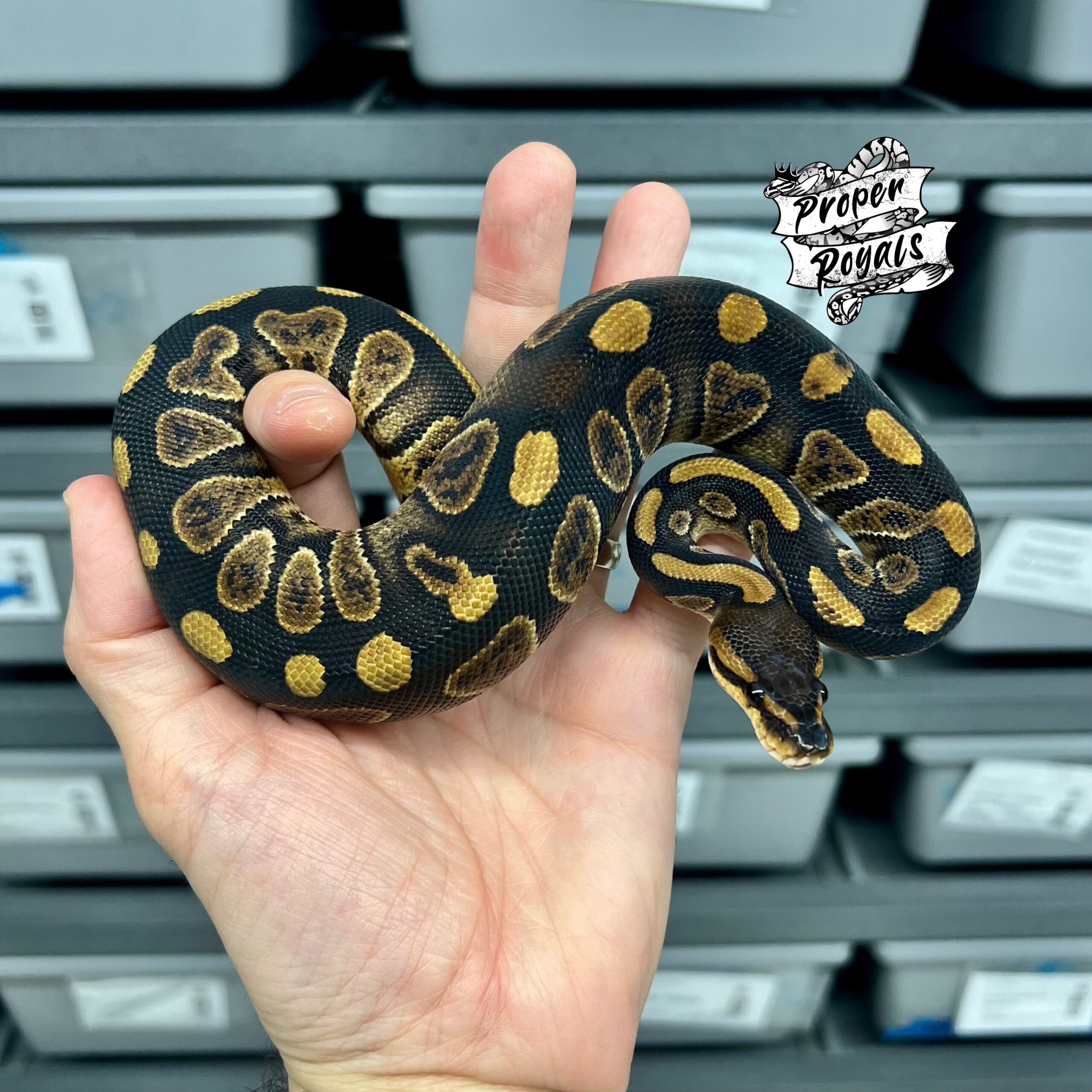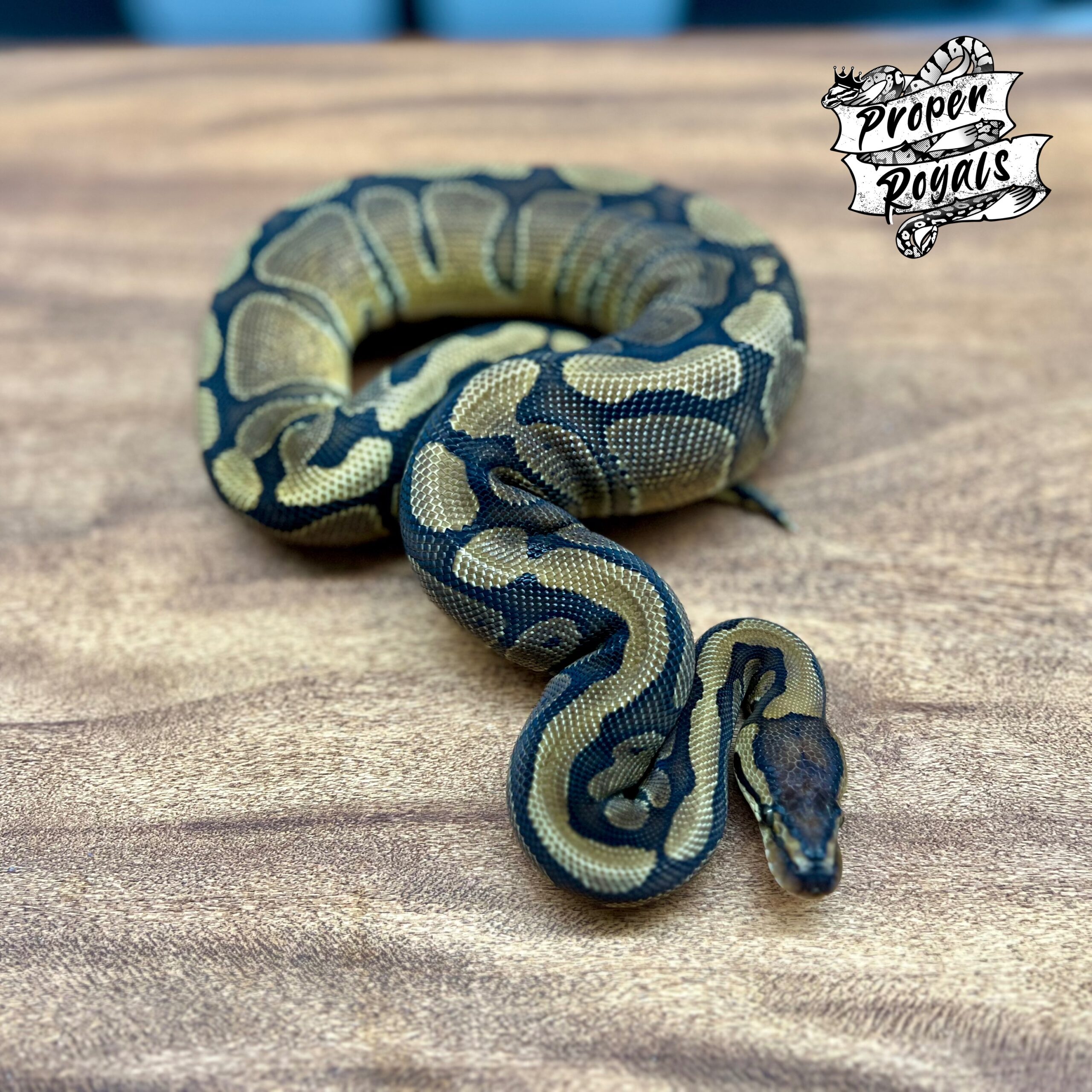BALL PYTHON BEGINNER CARE SHEET
If you are new to caring for Ball Pythons this is a great place to start. Below you find lots of details on how to best care for your new animal. If you have concerns that are not covered in this care sheet, please do not hesitate to contact us directly.
Congratulations on your new Ball Python! You are going to need to know how to take care of your new animal. This care sheet is geared toward hatchlings and juveniles. If you learn better by watching videos, then I recommend this great video from my buddy Sal at House of Gaia Pythons:
If you’ve purchased a sub adult or an adult Ball Python, I recommend this video from my friends at Snake Discovery for the care of your more mature ball Python:
Must haves:
Container with secure lid – small and secure feeling to the snake is the best – especially hatchlings or juveniles.
– Thermostat – DO NOT use heating products without a thermostat.
– Ventilation
– Water bowl
– Safe decorations
– Hide(s)
– Under container heat pad
– Cypress mulch or coco
– bedding
– IR temperature gun
Ball pythons like small secure areas. They don’t need a huge enclosure – and in fact that can cause feeding response issues. The large vast spaces make them feel insecure, especially as hatchlings or juveniles. Start with a small enclosure. You’ll have the next 20 years to house your ball Python in a larger enclosure. For hatchlings I recommend a six quart to 12 quart locking lid tub that you can ventilate. Once an animal is thriving in this setting, growing and eating regularly, pooping and shedding consistently, then you can consider moving it up to a 10 gallon aquarium or vivarium/terrarium setup.
Most often when a customer follows up to tell me that their snake is not eating, the first question I ask is “how big is the enclosure?” Almost invariably, it is a 10/20/40 gallon enclosure for a hatchling or juvenile. Some can thrive in this setting – most will not.
You’ll need a heat pad on the bottom of one side of the enclosure that covers approximately 25% of the bottom of the enclosure. This heat pad needs to be incorporated with a thermostat and set to 90°F. The heat pad goes on the outside of the glass and you will temp the inside of the glass to 90°. Temp the glass – not the top of the substrate. Otherwise, the ambient temperature should be 80° Inside the tub. Generally unless you keep your house very cold, the heat pad on one side will create a warm enough temperature throughout the small tub.
Very great guy, great seller! Met up and hand delivered my female ball, well cared for. Super knowledgeable! Thank You!
Manson
Jan. 19, 2024If possible, blackout three sides of the tub as well. Again the ball python wants to feel secure. You may or may not need a hide in the tub. A small hide or plastic garden pot saucer turned upside down works great. Sometimes my snakes even wear these saucers almost like a little hat – just like a blanket that doesn’t even cover them completely. Again, they just want to feel secure and the more things surrounding them, the better they’re going to feel.
Tubs are also great for controlling humidity. Whether you use paper towels, cypress mulch, or coco husk, you’ll need to spray it down from time to time to maintain humidity. If you see condensation accumulating or dripping from the roof it’s too damp. If the substrate is drying out within a day or two you have too much ventilation in the tub.
When you get the snake home, I recommend letting it be for a day or two before trying to feed it. Minimize handling or do not handle at all until the snake has eaten one or two meals


As far as feeder prey, refer to the information that I give you when you purchase your snake on what prey item it is eating. I’ll identify whether it’s eating live or frozen rodents and the species of rodent. All of my animals begin their lives feeding on ASFs (African soft fur rodents) and as soon as possible I transfer all of my animals to frozen thawed rats for their feeder prey.
When selecting the feeder rodent, my recommendation is to go just slightly smaller than the largest part of the snake in reference to the size of the rodent. Some people say to go slightly larger, but I don’t think that there is a need for that. It can be challenging to get your animal to eat for the first time in a new environment. In fact, I recommend for the first few meals sizing down significantly just to get them to start eating in their new home. I recommend feeding in the enclosure that they live in. I do not know why some people recommend taking them out and putting them in a different enclosure to feed. It does nothing but stress the animal and moving an animal immediately after it has eaten is likely to cause regurgitation or digestive issues.
I recommend feeding pet hatchlings and juveniles once a week. Once an animal reaches 400 grams you can feed it once every two weeks. And once an animal reaches 1000 grams you can feed it once every three weeks.
Keep your animal’s enclosure clean. Change and clean the water bowl twice a week. Remove feces and urine as they occur.
Feeding Your Ball Python: Best Practices and Common Pitfalls
Feeding your ball python can be one of the most rewarding aspects of owning these incredible reptiles. Proper nutrition is crucial for their health and well-being, but it can also be a bit tricky, especially for new owners. At Proper Royals, we’re here to help you navigate the feeding process with confidence. In this care sheet, we’ll cover the best practices for feeding your ball python and highlight some common pitfalls to avoid.
Best Practices for Feeding Your Ball Python
- Understanding Your Ball Python’s Diet: Ball pythons are carnivores, primarily eating small rodents like mice and rats. In captivity, a diet of appropriately sized frozen-thawed rodents is the most common and convenient option. Feeding your ball python frozen-thawed rodents reduces the risk of injury and disease transmission.
- Proper Feeding Schedule: Juvenile ball pythons should be fed once every 5-7 days, while adults can be fed every 7-14 days. It’s essential to maintain a regular feeding schedule to ensure your snake receives consistent nutrition.
- Choosing the Right Size Prey: The size of the prey should be proportionate to the girth of your ball python at its widest point. Typically, this means choosing prey that is about the same diameter as the thickest part of your snake’s body. Feeding prey that is too large can cause regurgitation and digestive issues.
- Thawing and Warming Rodents: Properly thaw and warm the frozen rodents before offering them to your ball python. For a detailed method on how to do this, check out our video: Proven Tip: Get Your Ball Python to Eat Thawed Rats Every Time. This method ensures the prey is warm and appealing to your snake.
- Feeding Techniques: Using tongs to present the prey can help mimic the movement of live prey and protect your fingers from a potentially defensive strike. Gently wiggle the warmed rodent in front of your snake to stimulate its feeding response.
Common Pitfalls to Avoid
- Inconsistent Feeding Schedule: Skipping meals or feeding at irregular intervals can stress your ball python and lead to refusal of food. Stick to a consistent feeding schedule to maintain your snake’s health.
- Offering Live Prey: Feeding live prey can pose significant risks, including injuries to your ball python. We recommend using frozen-thawed prey to reduce these risks. If you choose to feed live prey, always supervise the feeding to minimize the likelihood of injury to your snake.
- Feeding in the Enclosure: Proper Royals always recommends feeding your ball python in the enclosure where it lives. This reduces stress and the risk of injury and regurgitation.
- Handling Before or After Feeding: Avoid handling your ball python for at least 24-48 hours after feeding to prevent stress and potential regurgitation. Similarly, minimize handling before feeding to ensure your snake is calm and ready to eat.
- Refusal to Eat: If your ball python refuses to eat, do not leave the prey item in the enclosure for more than 30 minutes. Remove it and try again at the next scheduled feeding. Persistent refusal may indicate an underlying health issue, so consult a reptile veterinarian if this behavior continues.
Proven Tip: Get Your Ball Python to Eat Thawed Rats Every Time
For a more in-depth look at feeding techniques, check out our video on Proven Tip: Get Your Ball Python to Eat Thawed Rats Every Time. In this video, we share additional insights and practical tips to ensure successful feedings.
By following these best practices and avoiding common pitfalls, you’ll ensure that your ball python remains healthy, happy, and well-fed. At Proper Royals, we’re committed to providing you with the knowledge and resources you need to succeed in your reptile journey.

